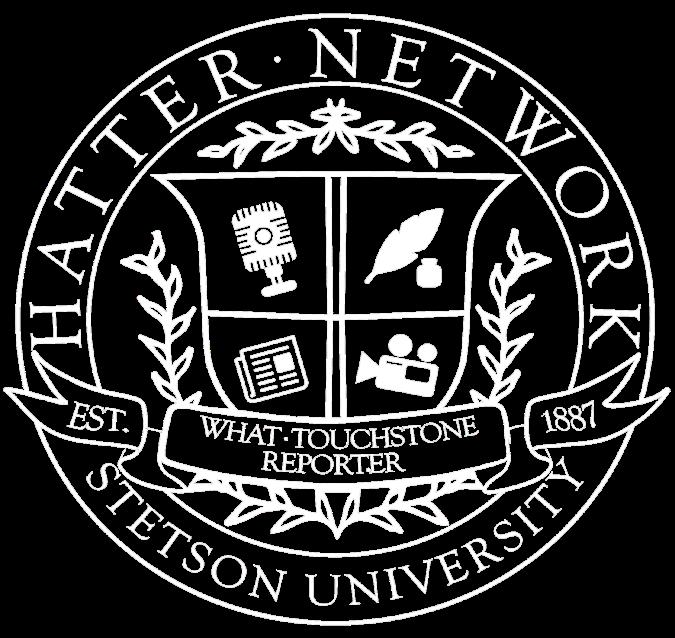23 Drag in Florida: Darkness in the Sunshine State The Origin of Camp
SPECIAL EDITION: WELCOME ISSUE


23 Drag in Florida: Darkness in the Sunshine State The Origin of Camp
SPECIAL EDITION: WELCOME ISSUE

Fall 2023
08 Stetson Glamping: Summer Orientation Flashback to FOCUS: A Week Full of Fresh Starts and First Impressions
33 The Very First: Leila May Child A Stetson Throwback

Ready or not, the 2023 school year has officially begun. After some time off, the feeling of returning to school might not be highly anticipated. For some, there's added pressure as bundles of anxiety accompany the students experiencing their first year at Stetson. I felt like that last year as I packed up extra slowly to prolong my first trip to my new home away from home.

This issue of the Reporter truly tells many stories. Within the pages you’ll find the story of the very first collegiate graduate of Stetson University, tips for commuters, and words of reassurance for incoming students. If you read even closer, however, you’ll find the story of this year's Reporter staff coming together to work as a team and prepare for the Fall 2023 semester.
The theme for this issue is “camp” which feels like a uniquely perfect theme for the season of life that we all find ourselves in. For new students, camp-us can truly feel as vast and full of potential as a camp-site. Returning students might not be as wide eyed, but I’d encourage returning Hatters to take on a camp counselor role, keep meeting new people and making them feel welcome. The camp theme can be perfectly understood as an ode to summer camp, but any suckers for hidden meaning would be wise to read the Drag Queen article to get educated about the second meaning of camp.
As a Freshman, one thing I didn't get to do was read the Orientation Issue of the Reporter released last year. I was too frazzled and tongue-tied to go the extra mile to look for such things that Stetson had to offer for Freshmen. So, we here at the Reporter took that extra mile for you this past summer. We worked vigorously through emails and the maze of social media to spread the word of this Orientation Issue, so you can catch a glimpse of our written stories that are filled to the brim with reassurance and camp wonders– some added with a little bit of spice.
In addition to welcoming new Hatters to the Steston family, the Reporter is also graced with a new team of Executive members. Through this Issue, we've gotten to know each other a bit through our writings, ideas, and ambition, and for a writer, that's enough to envision a future filled with camaraderie and adventure. For now, enjoy these following few pages that offer a new meaning to camp– one that’ll have you excited for Stetson to become your new campground.
Happy Reading, Alis
Cadena, Executure Editor


To all new students: Welcome! To all returners: Welcome back! This is the orientation issue of The Reporter, our student newspaper. It’s geared towards incoming freshmen, but all Hatters regardless are welcome to read this issue and hopefully learn something new.
My name is Cas Bradley. I’m a senior in the Honors pro gram, double-majoring in psychology and digital art, a coxswain on Stetson’s Women’s Rowing team, and the Edi tor-In-Chief of Hatter Network, our student media collec tive. We welcome and encourage creative expression from all students through our newspaper, The Reporter, WHAT Radio, our literary magazine Touchstone, and Touchstone’s open-mic night every Thursday, Uncouth Hour.
Here are the four things I personally did to ‘set up camp’ and make Stetson feel more like home:
1. I made at least one friend in all my classes. This was a great way to meet new people, and it allowed me to reach out for help (and help others) when we missed class or were struggling with assignments.
2. I got to know the people I kept seeing around. Stetson is a small school, so I started saying hello to people I had seen before and putting names to faces. Now, it’s almost a guarantee that I will run into someone that I am friendly with just by walking across campus.

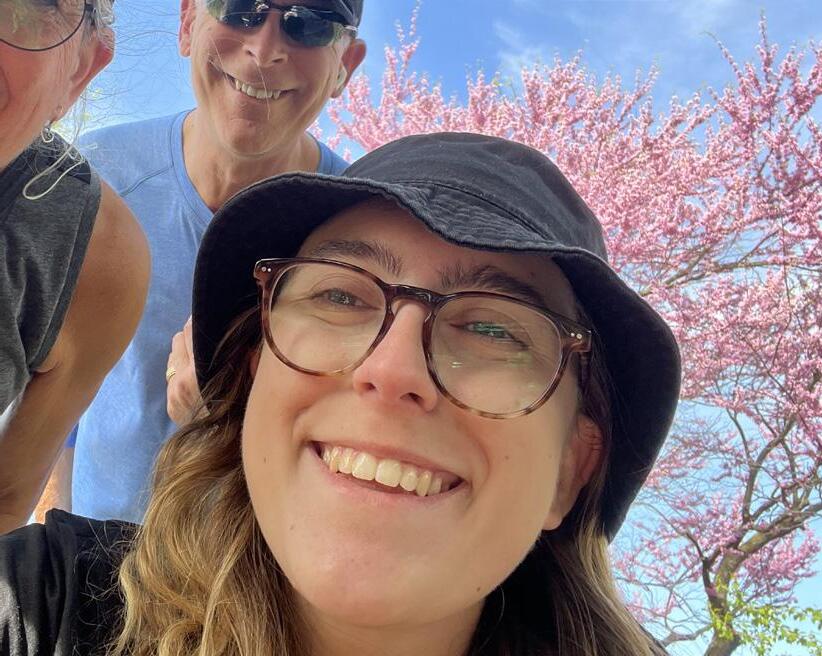
3. I got involved. I started doing design work for The Reporter my freshman year. I started taking photos for Hatter Network my sophomore year. I wrote my first piece junior year. I’m now the Editor-In-Chief of Hatter Network. Make sure you take your time and commit to only the things you actually have time for.
4. I became myself. This one is still a work in progress, but this is what college is really for. It’s a place for you to learn about the world and about your place in it. Having everyone like you is impossible. By being your genuine self, you allow others to get to know you, and you give them a chance to like you.
But… who are you? What do you like? What do you want to do? If you don’t know these answers yet, it’s okay; you will slowly start piecing them together as you go along. If you do know the answers to these questions… Get ready for that to change.
Welcome, Hatters, to The Reporter’s fall 2023 Orientation Issue.

GO, HATTERS!
Cas Bradley
Dear Reader,
To the new faces and familiar ones: Welcome to Stetson! This magazine is unique to any other you may see floating around campus later in the semester, and we hope that if you need a helping hand during the chaos of starting afresh on campus, these pages will provide some guidance, some encouragement, and a bit of fun. This is my first time writing a letter to you all, and it’s a privilege and an honor. As the director behind the fun layouts and visuals that tie the Reporter together, I’m so excited to share this magazine with you! In every issue we put out, I try to encapsulate parts of our culture as an organization, and as a community thriving on Stetson’s campus. Each of us brings something unique to the table in producing these magazines, and we’re bound by our shared appreciation for the beauty of art, the power of words, and the magic of human imagination.
That being said, this magazine is not just a one-way dialogue. It thrives on the synergy between us and you, lovely readers. Your feedback, insights, and enthusiasm shape future editions and ensure that our content remains as relevant and engaging as possible. Thank you for being a part of our vibrant community. Your presence enriches this magazine, and we are excited to bring you content every semester, hot off the press, from our tireless computers and sketchbooks, into your hands.

Gone Camping, Hayden
Collins Hayden Collins, Creative Director
Hayden Collins, Creative Director






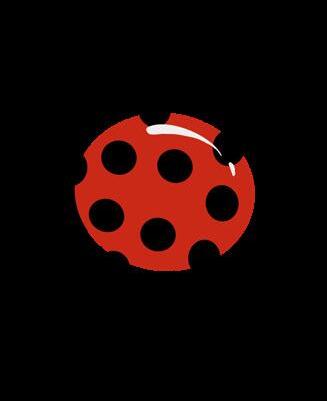


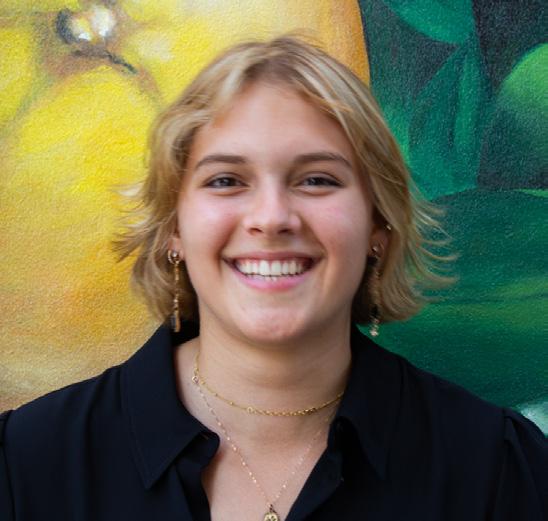

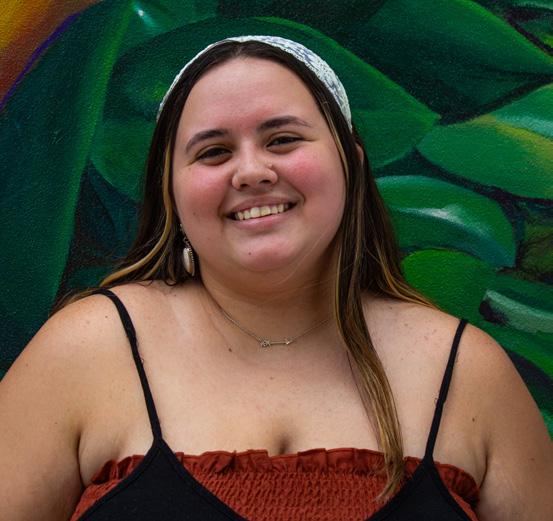 Cas Bradley Editor-in-Chief
Alis Cadena Executive Editor
Reagan Shivers News Editor
Cas Bradley Editor-in-Chief
Alis Cadena Executive Editor
Reagan Shivers News Editor
Cas Bradley, Editor-in-Chief
Hayden Collins, Creative Director







Alis Cadena, Executive Editor of The Reporter
Carlye Mahler, Managing Editor of The Reporter
Reagan Shivers, News Editor of The Reporter
Ciara Kelley, Arts & Culture Editor
Venus Turnbull, Creative Staff

Brooke O’Brien, Social Media Director
Sisi Small, Webmaster
Brandy Bennet, Staff Writer
Carla Rosario, Staff Writer
Lili Sheridan, Staff Writer
De’Vanese John-Baptiste, Staff Writer
I missed hanging out with other history majors in the Lycan room I missed the aesthetics of Stetson’s beautiful campus
community
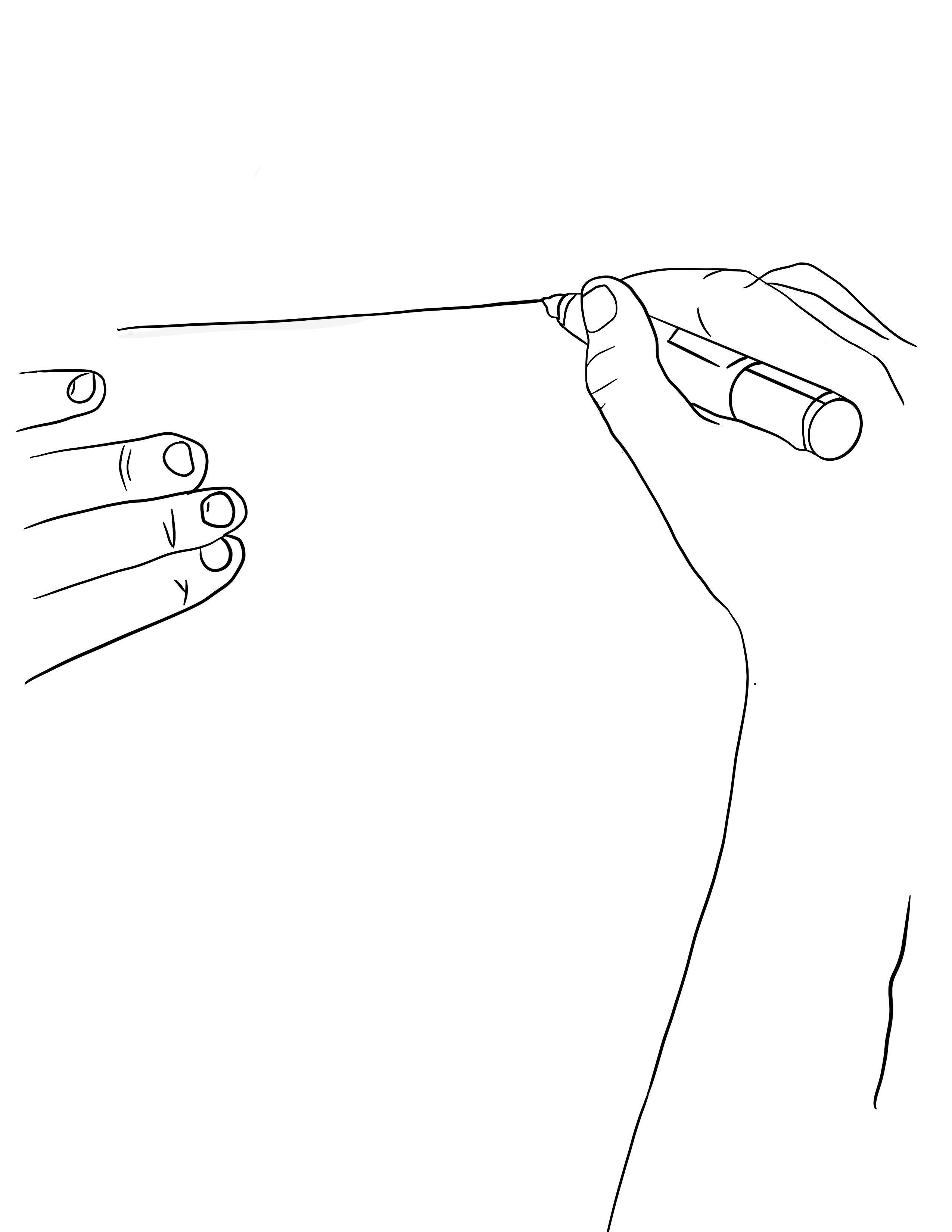
Hayle Morgan, Copy Editor
Definitely all my friends from the organizations I am part of!
When it comes to joining Hatter Network, we are never not excited about someone wanting to join our ranks. If you want to write, The Reporter is the place. If you like to appreciate art, music and writing, Touchstone Literary Arts Journal is where it’s at. If you want to create your own podcast, or learn how to use the tech in our radio station, WHAT Radio is there. Hatter Network is an extacurricular media program run by students, for students, to provide them with the information we think they need to know, or an outlet for their creative endeavors. If you’re interesed in getting involved, please email our Editor-in-Chief, Cas Bradley, at cabradley@stetson.edu or apply on Engage.
I missed hanging out with other history majors in the Lycan room
The Reporter, as part of Hatter Network, is the oldest collegiate magazine in the state of Florida. We publish four times per year, twice per semester. Florida Sun Printing prins 300 copies per isue on 8.5 x 11 inch, 80# Gloss Test, Most body text is set at 11 poind Adobe Garamond Pro or Times New Roman with 13 point leading set with a combination of regular, italic and bold. All pages are designed using Adobe Creative Suite Photoshop and Illustrator. For additional information please visit hatternetwork.com. Questions or concerns can be mailed to 421 N Woodland Blvd. Deland, FL 32723 or emailed to hatternetwork@gmail.com.


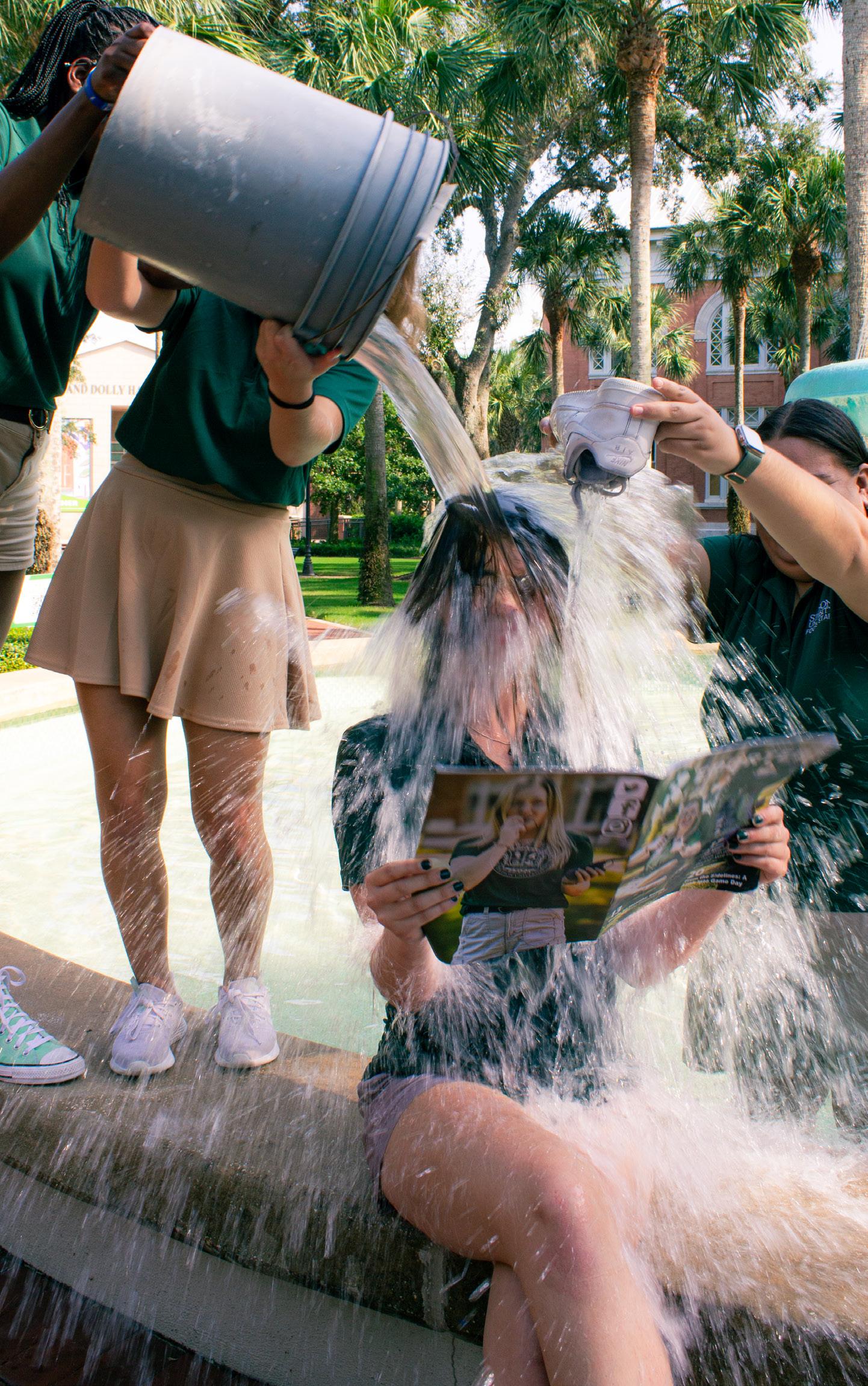
08

11 14 17 23 20 30 27 38 33
Stetson Glamping: Summer Orientation
Flashback to FOCUS: A Week Full of Fresh Starts and First Impressions
Ampersand
FOCUS Student Coordinator: Della Vaughan
Go, Hatters! A Guide to Stetson Athletics
Navigating Stetson’s Sport Life
Commuters: Unpacked
An Everything Guide for those who Drive
The Roommate Etiquette
Pointers on Roommate Propriety
Drag in Florida: Darkness in the Sunshine State
The Origin of Camp
Uncouth Hours & Cultural Credit
Stetson’s Weekly Open-Mic Night
Dear Reader Segment Pieces of Advice for New Hatters
The Very First: Leila May Child
A Stetson Throwback
Playlist
That’s so Camp!


 Designed by Cas Bradley
Designed by Cas Bradley
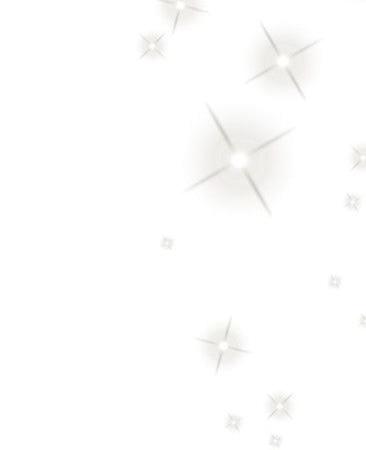

Whether it be bonding with your leader, creating connections, or getting acquainted with campus, FOCUS orientation allows incoming students to ease into their first year at Stetson. However, most current students may have a markedly different memory of their orientation compared to the incoming class. As of 2023, Stetson has introduced a new way to welcome future Hatters to campus with the debut of its summer sessions. Our staff had the chance to talk with a few faculty and students involved with summer orientation to get a better idea of how the program’s introduction
Because this early orientation is a first for Stetson, you may be asking yourself what exactly it is and how it differs from the fall or spring. To help answer this question, our staff spoke with select Student Development and Campus Vibrancy, SDCV, team members who broke down the purpose and schedule of events. The optional orientation was originally divided into four mini-orientations occurring periodically throughout the summer: three in June and one in July. These two-day sections were an introduction to all things Stetson, but unlike the typical fall orientation, students parents received an invite. “The summer orientation sched ule was created in a way that encourages students to create
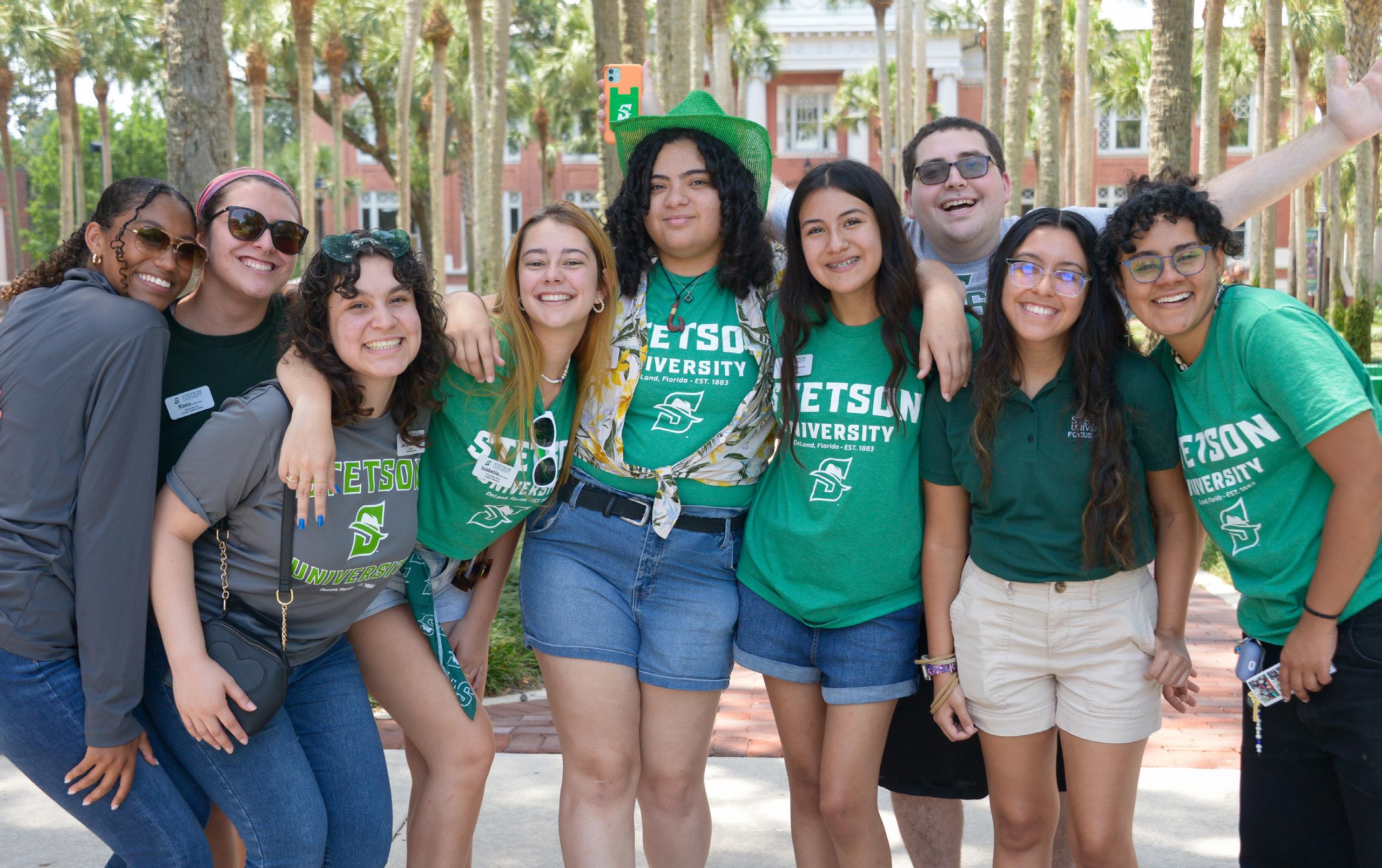
connections with their peers, our faculty and staff, peer mentors, and the rich and vibrant history of our campus community” shared Kristin Graham, Associate Director of First Year Experience and Transitions. Because the events took place over the span of two days as opposed to the usual week-long FOCUS orientation, students and their families were able to get acquainted with the Stetson campus and staff on a smaller, more intimate scale, hopefully getting them even more excited for their official orientation in late August.
“This is for any incoming students so that they are able to come to campus and kind of get a feel and look around Stetson. See what their classroom buildings may look like, or see what being in a dorm may look like” adds Angela Shah, graduate assistant for First Year Experience and Transitions. “We wanted students to know that they are finding a safe place and a safe space on campus, not just with the staff running the orientation, but also with fellow students.”
With a quick glance at the detailed schedule, it was evident the SDCV team was taking strides to cultivate the best experience possible for students and guests. The first day was set up to introduce students to one another, important members of the campus community, and their academic college. Crystal Baroni, Coordinator for Student Organization Advising and Programming, notes that the team “worked on making a welcoming and vibrant environment by decorating the spaces with balloons” and other miscellaneous informative decorations as a backdrop for directing and welcoming families the first day. The team, alongside FOCUS leaders, summer fellows, and volunteers from Campus Life and Student Success, prioritized mingling with students and guests to connect them with one another and make them more comfortable in their soon-to-be-home.
Following the initial check-in and welcome, students and their guests attended breakout sessions. Students had the opportunity to bond with their peers and summer fellows, diving into the Stetson experience and their “goals and dreams as college students” according to the schedule. Meanwhile, guests of students were introduced to the Dean of Students to learn about the best ways to support their Hatter in the upcoming year. The groups then came back together for informative meet-ups with the incoming student’s intended field of study, followed by the official departure of the families for the evening. The remaining students that opted to stay for the overnight experience were invited to a student dinner and pool party celebration.
Crystal mentions. Each SDCV member agrees on how essential the pool party was because it allowed students to freely socialize and discuss their days in a more relaxed setting for the first time during the orientation. Afterward, students were invited to stay overnight in Nemec Hall with more games and treats to ease them into their first dorm experience. “It can be very scary to move out of your place, and even as a commuter student, it can be very difficult because you might not know how to find community when you're not living on campus,” adds Anglea. “So even for students that don't do the overnight experience and are just coming for the day, they go back home to their families but can see that they're able to bond with other individuals,” she continues.

After the first night, students were offered breakfast before reuniting with their guests the next day to learn about academic advising and resources in an interactive session. Day two of orientation centers around the “opportunity to finish up any campus business” and “enjoy breakout sessions on important topics or further explore our campus community,” says Kristen. Once the day hits early afternoon, summer orientation comes to a close with a final celebration that includes “a photo booth, a banner for all of the incoming first years to sign that will be hung on the CUB when they come in the fall, and Whit’s ice cream handed out from their cute little ice cream cart,” Crystal says. “We could see the students finding ‘their people’ which in my opinion is my very favorite thing, as well as watching people find their home here at Stetson,” concludes Crystal. Kristin agrees, adding, “It was rewarding as a staff member to see our participants making friends, creating plans for the fall semester, and looking more comfortable in their new surroundings.”
As the faculty reflected on the summer’s success, Stetson students seemed to have shared the sentiment. Kylah Collins, a fourth-year Stetson student and summer fellow, walked our staff through her day-to-day orientation and personal favorite memories from each session. “Summer orientation is really a good opportunity for students to see what Focus Week is going to be like,” Kylah begins, “and we have so much to offer that is not known until you actually experience it, which is really what I try to focus on when I talk to parents and students.”
“We had music, lights, Jeremiah’s ice, games, Stetson towels, and pool floats available to enjoy,”
As a summer fellow, Kylah received room and board at Stetson during orientation season and got to meet most of the students and guests that attended. On the first day of each orientation, one of her first jobs is to help lead the breakout sessions with the students, acting as the first friendly face many of the incoming class meet. “We like to talk to them about what they're worried about. Usually, we have them write letters to themselves and do icebreakers. At first, it can be a bit corny, but once you break them out of their shell and get them going, the students really seem to build those connections and be a bit more open,” Kylah says. “We even did this one activity where I had them all write one thing they were worried about about coming to Stetson in the fall. Then I collected all the cards and redistributed them. I had everybody read what was on their new card just to show them that everybody coming in as a freshman at Stetson is worried about the same things,” she continues.
She notes how crucial it is for students to feel comfortable not only with her but also with one anoth er. Similar to the SDCV team, she mentions what a breakthrough the pool party idea was, noting that “Originally, we were scared, because sometimes high


schoolers can be a bit awkward and you never know what's gonna happen, but I really felt like I got to talk to a lot of people from different perspectives.” As a member of Greek life and other campus organizations herself, Kylah thought that the pool party celebration offered a great, relaxed opportunity to open up with students and learn more about their interests. She felt energized that she could share things about her personal Stetson experience that connected with different people, getting them excited to come back to campus in the fall, and even getting her excited to have made new friends as well. “I'm excited to have them on campus,” she adds, “you know, have them say hello to me and I will say hi back.”
Getting to know the students was not the only highlight for summer fellows and students like Kylah. She goes on to say, “I thought the inclusion of parents was really valuable, because sometimes parents are really left out of the conversation and don't know what's going on. For me, I remember when I was starting to apply and get ready to go to Stetson, people were on the phone with me and my mom. It was the recruitment counselor, the financial aid advisor, and my mom sitting right next to me on the phone with them talking,” she continues, “We want the parents to be involved and see what's going on; it is a big thing.”
The conversations with the SDCV team and students like Kylah demonstrate just how groundbreaking the inclusion of summer orientation was and will continue to be. Coming off COVID, lockdown, and virtual learning that has been prevalent in the past few years, it becomes evident how essential it is for students to create and cultivate campus connections. Introducing summer orientation allowed Stetson to capitalize on an aspect that makes it a unique university in the first place: its personability. As a smaller, private collection of colleges, Stetson prides itself on its commitment to individualized learning and maintaining its tight-knit community. The implementation of things like summer orientation is what rouses students to visit campus and see themselves there. Kylah hopes that her sentiments will resonate with future Stetson students when she said,
“I want to go to this school. I want to have this experience. I feel this community here.”
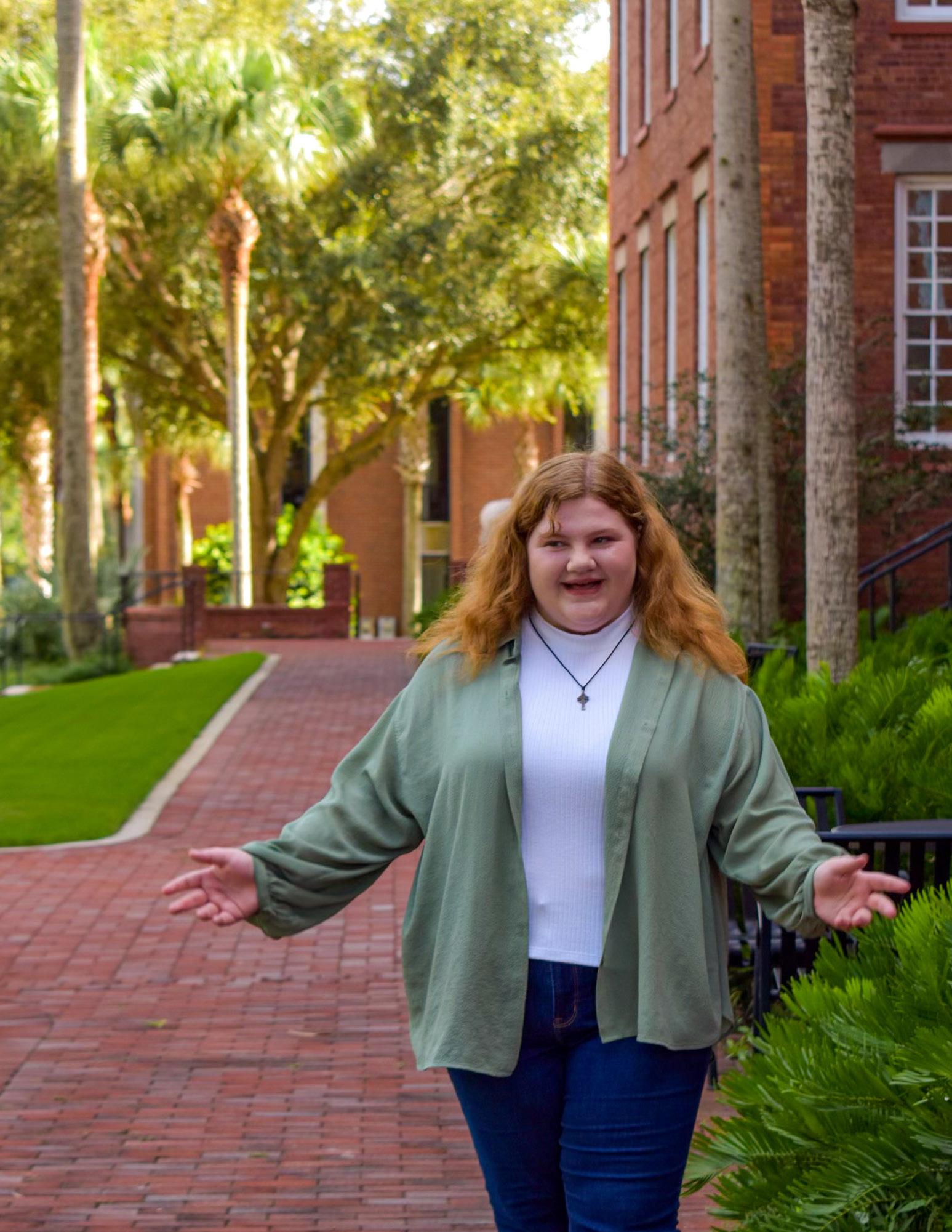 Written by Alis Cadena
Written by Alis Cadena
For this Issue, I sat down - virtually - with Della ‘24, a history major who minors in Russian and East European duration studies, as well as theater arts.
What made you first interested in applying to be a FOCUS leader?
I applied during my first year. The reason I was drawn to the program was because of my FOCUS leader. She was truly my first friend on campus, the first person I knew, and was such an amazing influence and person to be around, and to get to see what Stetson was like for her when she was going through it… Because of her, I was interested in focus.
What does a typical day as a FOCUS leader during orientation week look like?
It’s so hard to use the word typical. Well, I think one of the very first things that gets drilled into you with focus is you have to be adaptable and flexible. It’s kind of just like, the whole motto of this orientation is being adaptable, something which I feel the pandemic has definitely taught us how to do well. But, it looks a little different for everyone depending on your position. For me, it’s going to look like a lot of behind the scenes work– doing late check in, so anyone who wasn’t able to make it for that big first check in. I’m still going to be running the list every day to make sure you know, no one’s had any last minute changes in their focus group. One of the biggest things is honestly like tech issues and helping solve tech problems.
What’s your favorite thing about FOCUS week?
That’s so hard– I love everything about focus. It’s why I’ve done it for several years. I would say, I think my favorite thing, is seeing the moment where it clicks for someone that this is their new home or like their home away from home. And that’s because FOCUS Week really is the make or break moment for a lot of people, you know, like you could take five tours and go to a summer orientation. And it still hasn’t really set in–like, “this is where I’m going to be for potentially like the next four years of my life.” And college is such an important time in people’s lives.
Do you remember when it clicked for you when you were a Freshman?
My parents were coming to pick me up because I drove myself for whatever reason to FOCUS that day. And while they were on the way over, it was storming super hard, like, on the way to campus. It was like a torrential downpour, tons of thunder, lightning, and the car was actually struck by lightning, like, while my parents were in it. Luckily, everyone was fine and safe. My mom texted me– she’s like, ‘Yeah, the car is dead, it’s gonna be like, an hour and a half, two hours before we can even get someone to come pick us up so we can come get you.’ I was like, what do I do? Everything was done for the day. So I went over to my FOCUS leader and was like, ‘Hey, by the way, do you mind just hanging out with me for a little bit, or at least showing me where I should go?’ She just sat and talked with me for like the next hour, hour and a half, you know, while I waited until I was able to be picked up. So I would say that was probably the moment it clicked. Like, yeah, I obviously made the right choice. Where else was I going to get this? You know?
Do you have any tricks on better acclimating the newbies to Stetson?
I think the most important thing, and I try to tell this to like all the focus leaders and staff as well, the most important thing is meeting people where they’re at. And one of the amazing things about FOCUS is that our staff is so diverse in like, where everyone’s from, backgrounds, majors, interests, but also personalities. The really neat thing about having focus leaders that are so different like that, is that there are going to be some people who are ecstatic to see that super bubbly person, you know, and it’s going to bring them out of their shell, and make them really warm up.
“My favorite thing is seeing the moment when it clicks for someone that this is their new home...”
“My favorite thing is seeing the moment when it clicks for someone that this is their new home...”
What are things you wish your FOCUS leader did for you, now that you are one yourself?
My FOCUS leader had the added challenge of it being 2020 and no one knew what was gonna happen. Something I wish my FOCUS leader would have done differently… I think what would have been the only thing I would add in would be like post focus– where we could connect with the whole group. But honestly, I would say I’ve modeled my style of being a FOCUS leader a lot off of how she [Gaby Morales] was as a FOCUS leader, because I know how comfortable and how welcomed she made me feel.
What do you think is the most important aspect of FOCUS week?
I think the most important aspect of focus is that the students who are coming into Stetson are able to get what they want out of it. Some people come in wanting a chance to meet people. Some people come in wanting that feeling of security– of like, ‘I chose the right place’ or ‘I’m going to be safe here’. But again, for some people, they have no thoughts about FOCUS, they’re just like, ‘Oh, it’s just something else to check off the to- do list.’ And in that case, you know, I hope that they get something a little bit more than the check off the to-do list.

What are some vital skills you learned from being a FOCUS leader?
I think one of the biggest ones that I have learned is how to be a leader. And not only how to be a leader, but how to lead a group of leaders. I’ve been both a FOCUS leader, as well as a Student ambassador. I got to learn how to represent myself, but also how to represent the University, which was a really positive experience. And communication comes hugely into both of those positions, so it’s also a skill I’ve worked on a lot in the past few years.
Do you have any advice for the newbies coming to Stetson?
So this is advice that my FOCUS leader gave to me during our first few days of FOCUS. Something she told us to do is from the first time you stepped foot on campus, put your name down for something that you’re vaguely interested in. It can be Baking Club, it can be hatters down under, Hatter network, even. It’ll get your foot in the door. Even if you don’t end up sticking with that organization, you’ll meet people there who maybe are in other organizations that sound like things you like and would want to do. It can be a really amazing way for you to put yourself out there and to not allow yourself time to be homesick, or to spend too much time dwelling on things like, ‘Oh, what if I got into this college instead?’ So just put yourself out there.
Stetson is a Division 1 university with 18 NCAA-sanctioned teams and our co-ed cheerleading team, making a total of 19 athletic teams. We have 8 men’s sports, ten women’s sports, and a group of fabulous athletic staff who should be considered the school’s twentieth team. Whether you are a die-hard sports fan or someone who only knows that sports usually have a ball, a goal, and a point system, this guide is here to help you get to know Stetson Athletics.
University of Dayton, Drake University, Marist College, Morehead State University, and Valparaiso University. Similarly, our women’s rowing team also competes in a different conference than Stetson’s other sports– facing many of the same names, including Dayton, Drake, Jacksonville, and Marist.
Men ’ s:
Baseball
Basketball
Football
Golf Rowing
Soccer
Tennis
Women ’ s:
Basketball
Beach Volleyball
Cross Country
Golf
Lacrosse
Rowing
Soccer
Softball
Tennis
Stetson University is a member of the ASUN conference and the Pioneer Football League (PFL), and is an associate member of the Metro Atlantic Athletic Conference (MAAC). For those who might not know, this means that Hatters compete against the other member schools of these conferences. This list includes Bellarmine University, Eastern Kentucky University, Florida Gulf Coast University, Jacksonville University, Lipscomb University, University of North Florida and others. Our football team competes against an entirely different set of schools, as Stetson is the only ASUN member whose football team competes in the PFL. Our football competitors include, but are not limited to, Butler University,
Throughout its history, Stetson’s baseball team has been a team to watch. Past the walls of Stetson, baseball alums proceed to garner people’s attention as they claim reputations for themselves. Jackson Olson, who earned his MBA at Stetson in 2021, walked on to the Savannah Bananas, arguably one of the country’s funniest baseball teams. Then there’s Logan Gilbert, a first-round pick for the Seattle Mariners after graduating in 2018, and Jason DeGrom, the 2014 National League Rookie of the Year and two-time Cy Young winner.
Though, baseball isn’t our only athletic claim to fame. As a whole, we have our fair share of impressive student-athletes: Grace Lenczyk, ’52, won the Canadian Women’s Golf Open twice and, in 1948, won the U.S. Women’s Amateur Championship– today’s NCAA women’s golf championship. Donald Payne,’16, was signed by the Baltimore Ravens in 2017 and is the first Stetson alum to play in the NFL. Alexandra Buelow helped the women’s golf team win three consecutive ASUN championships and decided to go pro following her third year at Stetson. Natalie Simon, ’11, recently became the first Black American woman to hold a FIFA badge.
But, that’s not all! For the last two years, our beach volleyball team has held the title of ASUN Conference champions. Two of our 2023 baseball grads, Christian Pregent and Austin Amaral, were drafted to the MLB (the New York Mets and the Washington Nationals, respectively). The women’s tennis team ended their 2023
spring season ranked ninth in the Southeast Regional Rankings. Additionally, according to Dan Schubert, Associate AD for Strategic Communication & Tickets, our basketball game against Kennesaw this past January saw Hatter support reach a pre-COVID-level high with around 800 people in attendance.
To keep up with all these successes, it only seems right that our stadiums and events are outstanding as well. There are three significant changes to note in this area. The first is over at our football field in Spec Martin Stadium. Students spoke and our athletics staff listened; instead of corralling students on the hill this year, there is now a seated student section! The second is the return of a tradition: the Hatters are bringing back the bell. If you rang a bell on Hatter Saturday or committed to Stetson while on campus, you know exactly what bell this is because you rang it! Now, students can ring the bell to show their support whenever our football team makes a game-changing play, such as a touchdown or an intercep tion. Finally, our baseball stadium, Melching Field, got an 8 million-dollar facelift. Renovations include a new scoreboard, sound system, new lights, and some changes to The Green, which is the open space running alongside the first baseline.

As some might know, Stetson is a pretty small school. Student-athlete life at Stetson isn’t the same as what it typically looks like at a big, public university. While we have some beautiful athletic facilities and incredibly caring staff, Stetson athletes are students first. Despite our small class sizes, you’re likely to have at least one student-athlete as your classmate. Our student athletes hold themselves to high standards, both on and off the field.
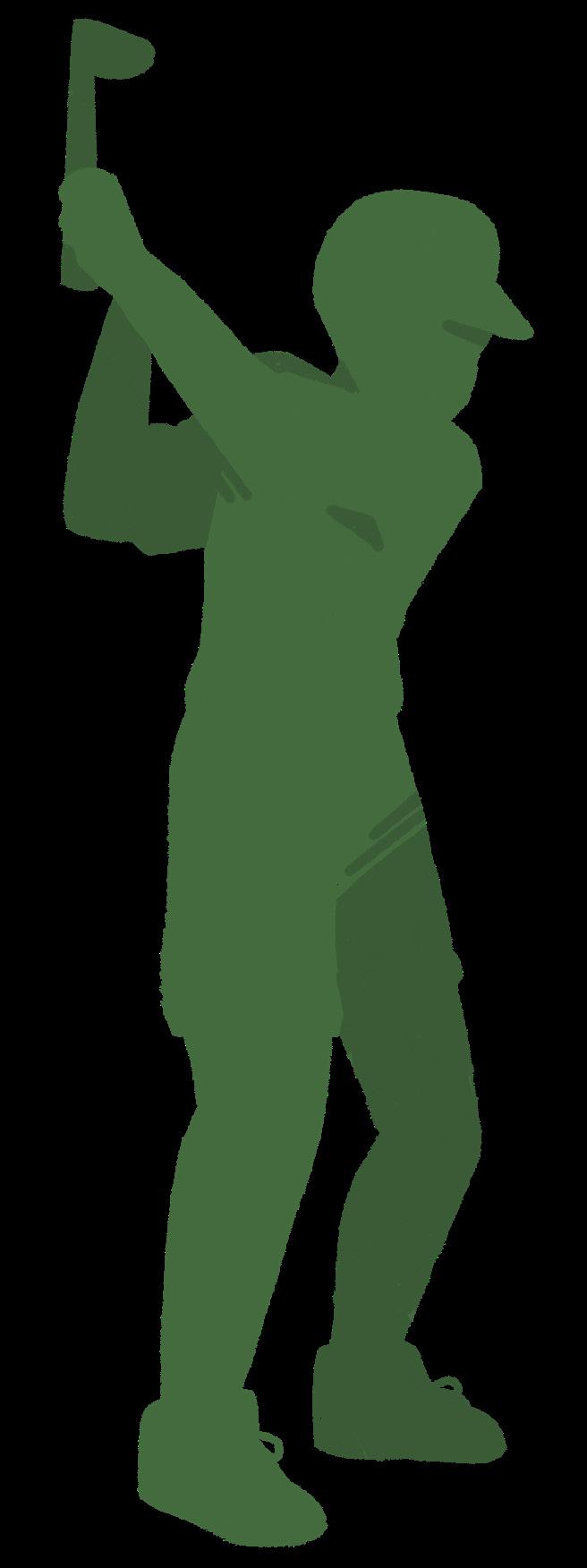


Whether you played a sport in high school or just want to give it a try, there’s always an opportunity at Stetson. All our teams will accept walk-ons. In fact, walking onto a team is highly encouraged- with athletes graduating each year and the heaping need for practice players. The downside is that walk-on spots are limited and often fill up quickly. So, if you’re interested in trying out for a team, contact the head coach and let them know. Either they’ll assign you to an assistant coach and have you start filling out paperwork, or a walk-on might not be needed and you’ll have to try again next semester or year. Walking on is highly variable, but if your athletic performance is just what the team needs, you might earn an athletic scholarship for the next semester.
Ready to try out and walk on? This fall, the Women’s rowing team will hold an information session on August 29th at 5:00 pm in the Stetson room, and tryouts will be held on September 5th at 6:00 am at the Sandra Stetson Aquatic Center. Another sport to look out for is cheerleading, where you can reach out to Head Coach Melissa Knepshield (mknepshield@stetson.edu) for more fall tryout information.
If walking onto a Division 1 team isn’t your speed, Stetson also has intramural and club sports. These are not affiliated with Stetson Athletics, but are instead hosted by the Wellness and Recreation team. Club sports include, but are not limited to, aikido, surf, scuba and table tennis. Students wanting to join club sports can do so through Engage. Intramural sports occur at various points throughout the year, and registering for them begins by filling out a simple interest form under the intramural sports tab on the Wellness and Recreation page on stetson.edu.
Regardless of whether you’re a student-athlete or not, here’s what you should know for this coming semester:
1. Football, men’s and women’s soccer, indoor volleyball, men’s and women’s cross country and cheer are all active in the fall
2. The calendar on gohatters.com is the most up-todate place for athletic information
3. Student admission to games is always free–all you need is your student ID
4. The student shuttle to Spec Martin Stadium leaves from the Athletic Training Center (ATC) one hour before kickoff
5. Hatter Village, our big tailgate event with promotions and live music, will happen at the first and second home games, as well as during our homecoming game
Clayton Barnes, Stetson’s Assistant Director of Marketing, Promotions, & Corporate Fulfillment, did an amazing job last year in making our games both meaningful and fun. These activities and promotions provide students with more incentives to look forward to when it comes to game night. One example from last year was our Stetson staff shootout, where President Roellke went up against athletic staff members Ben Cousins, Jack Hudon and Demetrius Weaver to win their section of students free Zaxby’s with the most three-pointers. Similarly, at the Our Kind of Stetson basketball game, various student organizations had their names put up on the scoreboard while they all played a game of Knockout. As for meaning, our Soccer and Lacrosse teams partner with Morgan’s message to help reduce the stigma of talking about mental health in sports. Stetson also regularly partners with Hilinski’s Hope Foundation for specific games and events. This year, be on the lookout for events like these, announcements of theme nights or game-specific freebie opportunities, and more on the Stetson Athletics calendar, on the @StetsonHatters Twitter account, and the @stetsonhatters Instagram account.
Going to a Stetson game, regardless of what sport you’re watching or what fun promotions the athletics team brings, is bound to be an exciting experience. You’ll support not just student-athletes but your classmates and friends. Plus, going to a game is a great way to meet new people or get to know the people you’ve already met. If you’re nervous about going, just remember that we’re all Hatters.
INFO: https://gohatters.com/ TICKETS FOR NON-STUDENTS: GoHatters. com/tix, box office at the site, 1 hr prior. 386-738-4287 (HATS)
“Student athletes are very much part of the student community.” - Heather McCormick, Associate AD for External Communications
“You’ll meet somebody, or you’ll see somebody you know or recognize. You’ll fall into your comfort zone.” - Daniel Schubert, Associate AD for Strategic Communication & Tickets
Starting college is a period of adjustment for everyone. But for students not living on campus, it can be complicated as most of the advice given in college guides is typically limited to a residential living experience. Having the college experience isn’t dependent on where you live, but on how you choose to engage with what is on campus. Still, commuters have to adapt to school differently than residential students, so here are some quick tips.
 Designed by Cas Bradley and Hayden Collins
Designed by Cas Bradley and Hayden Collins
Spending the day on campus can be draining. Make sure to eat breakfast at home or stop by the coffee shop if you’re in a time crunch. Also, bring a refillable water bottle and maybe some Advil--or any other medications you would need in an emergency.
Chargers
Always bring your phone charger. If you have a laptop, then definitely bring that charger too. Trust me, you don’t want to run out of battery during a late study session in the library.
Parking
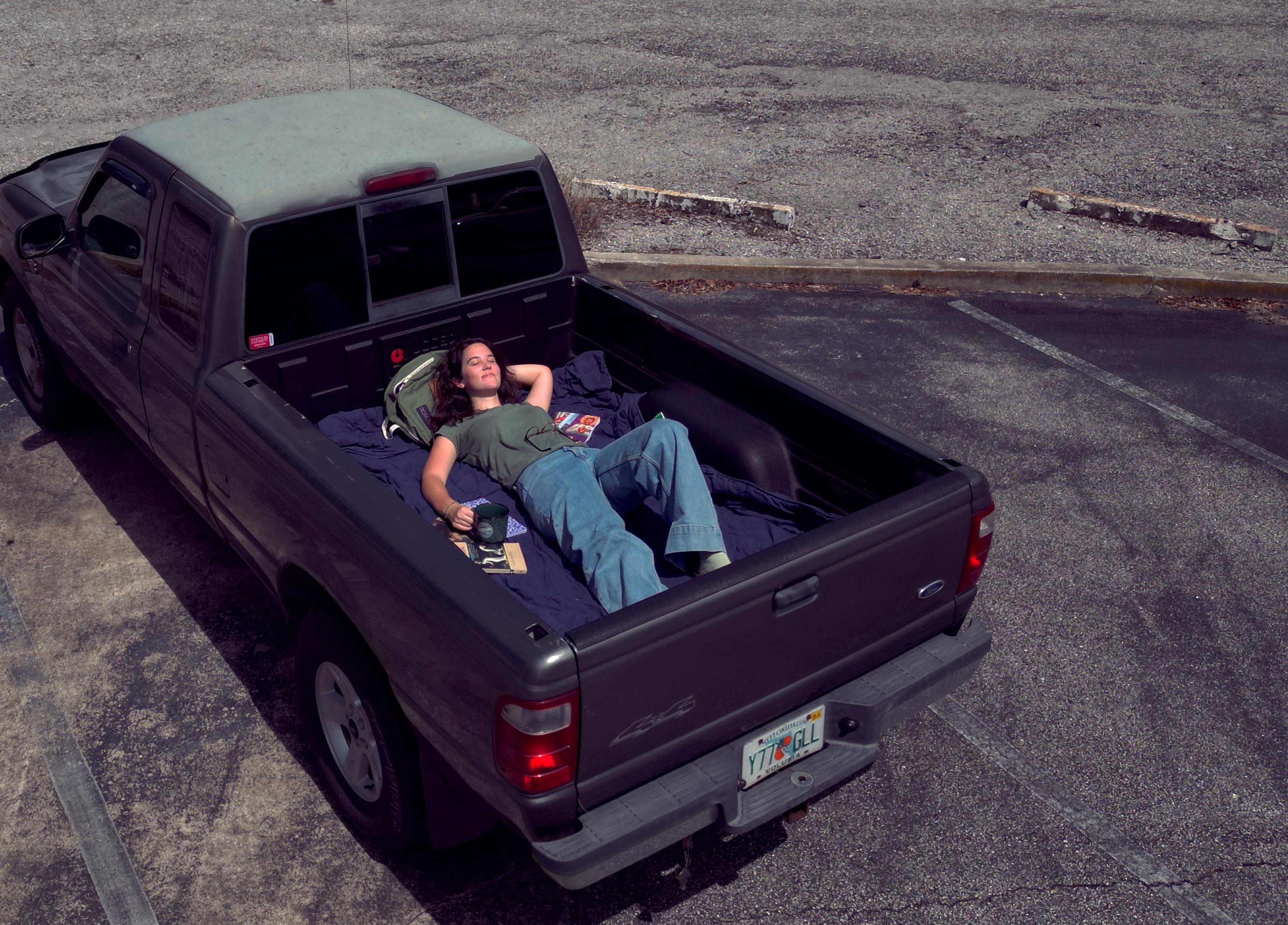
Make sure you have the Commuter sticker on whichever vehicle you have registered with the school, and... just park in the correct lots. Trust me, it’s tempting to park in the closest lot to your class, but you can never know when Public Safety will hand out tickets.
Staying on campus during the day without a dorm to relax in can be tricky. Luckily, the campus has plenty of spots to study, socialize and recharge!
While the Dupont-Ball Library has it all–computers, charging stations, vending machines and comfy chairs- it is the basement that is a student favorite for a quiet place to relax. Take a minute to hop on one of the beanbags and enjoy the quiet zone!
No laptop? No problem. Check out the campus IT Lab for a nice place to type and print that last minute paper. The IT Lab located under the library is also open 24/7, accessible with a student ID.
Explore the CUB! Visit the Coffee Shop or Lynn Dining Commons on the first floor, and then make your way up to the second floor for some quality time in the Student Lounge and Lee’s Garage.
Have that one classroom that keeps you focused? Visit it outside class hours, and you may find your favorite study place. When you’re done with the place, make sure to clean up after yourself. Erase the whiteboards, put the desks back, and leave your campsite better than you found it!
Commuters usually receive the same advice for making friends on campus. While joining Greek Life and organizations works for most students, other commuters have tight schedules outside of school and can’t manage to be on campus for these specific time commitments. Here are some other ways to get your foot in the tent:
- Keep a calendar of events happening on campus. Doing this allows you to find out what does and doesn’t fit your schedule in advance. Knowing this will help you attend more events with more ease. Stetson’s Engage app and website are a great way to keep up to date with on-campus events.
- Make sure to follow official school accounts and other Stetson-affiliated organizations on social media; most organizations use their social media pages to promote upcoming meetings and events.
- Join at least one organization that you can stick with. It doesn’t have to be serious; try out a new hobby with the Baking Club, Club Running, or even start your own! Make sure you visit Club Rush and learn all that Stetson has to offer.
- Get involved in your major’s department. Many departments will host a Fall mixer; find out when yours is and take the chance to get to know your future professors and classmates. Being an active member of your department not only provides a supportive social environment, but it will expose you to more academic opportunities as well.
- Last but not least, say yes! Each commuter has a unique school/home balance, and sometimes we just don’t have enough time to stay on campus. But saying yes to invitations is the only way to get yourself out there. Work with your commuting schedule and be transparent with your friends about when you can and cannot be on campus.
It’s a myth that commuters can’t have the college experience without living on campus.
In my experience as a commuter, the first year was a learning curve. Getting over the feeling of being an outsider was difficult, but it was eventually achieved through trial and error. It will take time to become familiar with this new balance- but in the end, it can be just as fulfilling as living on campus!

You can still get involved, form lasting friendships and make a difference.
Freshman year in college is full of firsts: your first college class, your first year seminars, your first time living away from home, and for many, your first time having a roommate or even sharing your living space with someone outside of your family. The road to perfect roommate living is not easy, and there is a way to do this without taking the name of an inconsiderate roommate.
Of course, living in a dorm with a complete stranger is one of the many experiences you’ll undergo in college— it is one of the many traditions required to partake in, after all. People rarely find themselves rooming with someone they know, which becomes incredibly awkward for people who are used to coming home to their own bedrooms. Having a roommate is a roller coaster of ups and downs, so here are some tips to hack roommate relationships.
At the beginning of each semester, Resident Assistants typically recommend filling out a roommate agreement form. However, this form is more like a 2-3 page packet covering every angle to live peacefully with your roommate. Questions range from how you feel about sharing snacks or inviting guests over to cleanliness and schedules.
If your roommate is hounding you on a cohabitation issue a month into the semester, you can always whip out your handy roommate agreement. It is the form’s words against theirs, so I definitely advise you to work through the initial discomfort and complete the form very seriously. If your RA doesn’t hand one out, get in touch with them and request a form.

Though filling out the form with your roommate is pretty awkward and confrontational, it is quite beneficial for future conflicts that may arise between each of you.
A classic piece of advice given is ‘Communication is key’. It isn't a well-known phrase for nothing, as it can be effectively utilized toward achieving a particular goal. In fact, this advice can be used in tandem with any of the tips on this list like communicating with your suitemates/roommates or talking to your roommate about your desired state of privacy.

Communication is the best tool for maintaining any relationship, especially between roommates who were strangers not too long ago.
Communication is especially vital when issues and disagreements occur between you and your roommate while living together. And when they do, it is common for tensions to arise between each of you. You should not leave those tensions hanging in the air for too long; come to a conclusion together that is ultimately beneficial to both of you. People taking the time to talk things through will keep everything in order and make for a peaceful cohabitation experience.
Here at Stetson, there are suite-style dorms available to students for selection, such as Chaudoin, Emily, Hatter, Nemec, and University Hall. For those of you living in those dormitory buildings, you don't only have your roommate to consider during your stay–there’s also your suitemates to consider. In comparison to your roommate, suitemates are only connected to you through a shared bathroom, which causes your interactions to be more limited. Nevertheless, your paths will inevitably coincide. Because only one private bathroom is available for both bedrooms, it helps to be mindful of two main things: how much time you spend in there and overall cleanliness. Work out a schedule to keep the restroom tidy, maybe taking turns each week for who has to clean it, and make sure you also communicate about how much time each of you spends in the bathroom to ensure no one monopolizes the space.
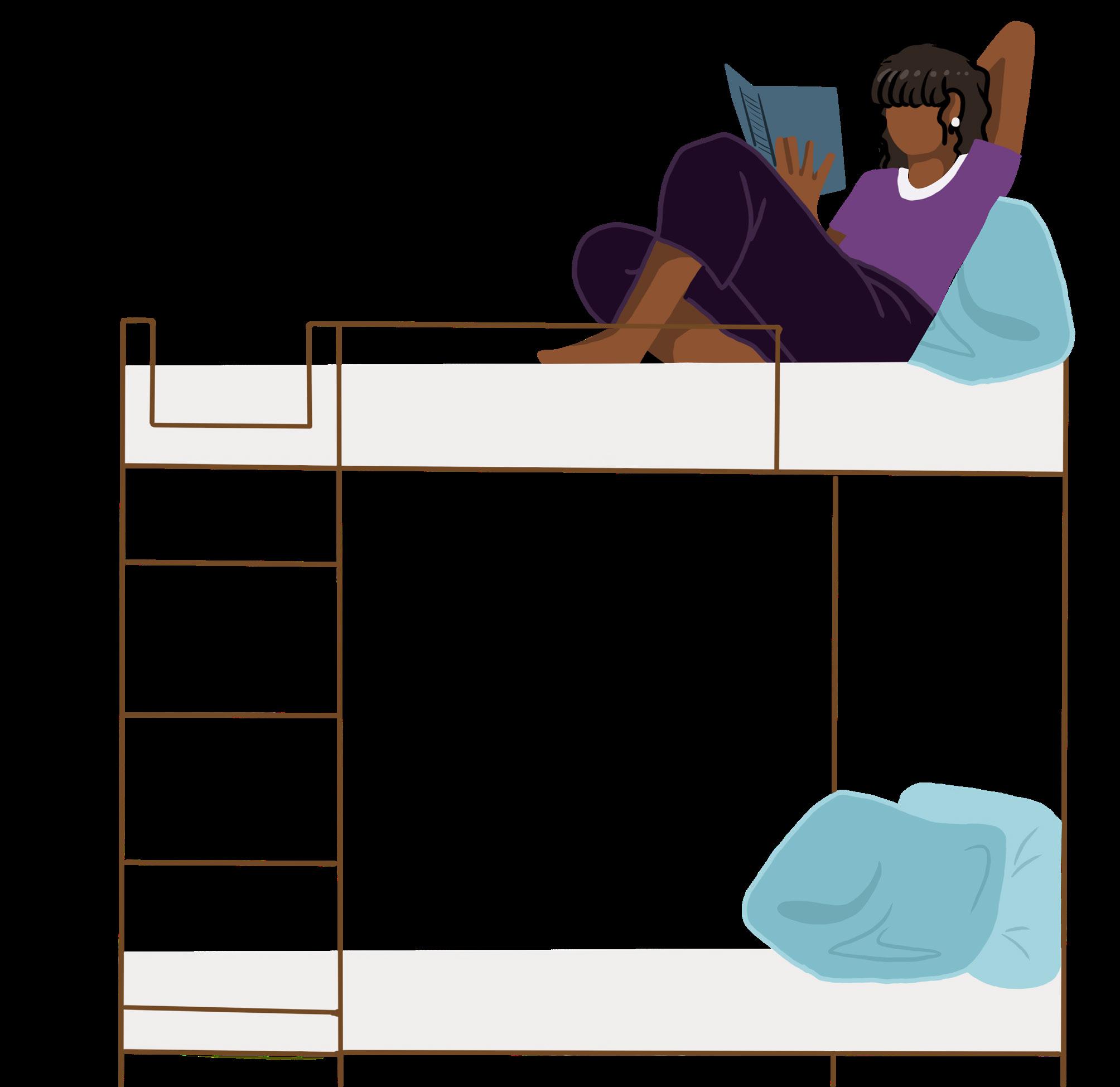
Most of us are used to having our own private living space where we don’t have to be considerate of the sensibilities of anyone. This changes when we get a roommate and start sharing a living space with them. For most students at Stetson, especially first years, this living space is limited to a single bedroom or a suite style with a shared bedroom and bathroom. For the latter, locks in the bathroom help ensure privacy, but what about the bedroom? Well, while you might assume that there might be a sort of locker room situation, we’d advise there be some discussion beforehand about your roommate’s sensibilities to there being any changing of clothes in the bedroom. They could open the door right as you are changing clothes or might not hear you in the bathroom. An excellent way to deal with this issue is to hang up shower curtains/sheets and use them as cover to change behind.

Regardless of whether or not someone is an introvert or extrovert, it is inevitable you will crave alone time, especially after an exasperating day when nothing sounds more pleasant than to head straight home and finally unwind. The only difference now is that you’ll have a roommate in the same boat. While your dorm is your home away from home and your safe space, in the case of having a roommate, it is helpful to balance your time in and out of the dorm. Though you most likely will not want to venture back to campus and socialize, there are plenty of places where you can be alone and decompress. The coffee shop offers a chill atmosphere with snacks and comfortable seating, along with halls like Cici & Hyatt Brown or Sage that offer a place to sit down and scroll. And, if it’s a nap you are looking for, the library basement or Carlton Union’s game room has couches, snazzy beanbags, and specifically in the
To anyone who has yet to attend college, it is widely believed that roommates are automatically equivalent to best mates. This, however, is not the case for everyone. Movies and books usually dramatize the relationship between roommates, and while it’s great to want to be close to your room mate like how they portray, sometimes expectations don’t always become reality– And that is perfectly fine. You do not have to be BFFs with your roommate.
Of course, there is always potential to become close with your roommate. But sometimes, having a presence in the room when you first move in is enough to feel less alone in a new environment. After that, you will start getting used to the new setting and start making friends of your own.

From time to time, the roller coaster of a ride with your new roommate may have more downs than ups. There are times when it becomes clear that a roommate situa tion cannot be salvaged, which is completely fine. After all, Stetson is your home away from home, and you shouldn’t force yourself to live with a roommate you can’t properly cohabitate with– especially if it’s in a room that’s too small to do a cartwheel in. If you feel the need to change rooms, Residential Living and Learning’s room change requests come in clutch. Typically, these forms are released on Housing Central twice a year: once in the fall and once in the spring.
Regardless of the circumstances, etiquette in itself is a tricky thing to get the hang of. Sometimes we forget and make mistakes, which will happen no matter how many lessons or tips we read. The advice on these pages are meant to help guide you through your relationship with your roommate, and now, it’s up to you to take the first steps into applying it in real life. Remember, your room mate is also in the same boat in the start– luckily, you have each other to guarantee it won’t tip.

What matters is that you two get along and base your relationship on respect and understanding.





 Story by Carlye Mahler and Ciara Kelly Graphics and Layout by Venus Turnbull
Story by Carlye Mahler and Ciara Kelly Graphics and Layout by Venus Turnbull
It’s no secret that Florida has not been the most friendly to gender non-conforming communities and individuals. Amid this tension, there have been controversial laws passed which attempt to criminalize and shame those who take part in drag performances, observers and Drag Queens alike. Senate Bill (SB)-1438 was signed into law by Florida Governor Ron Desantis on May 17th, 2023 and sought to make it a crime to have “obscene” adult live performances where children could be present. However, the definition of obscenity is so broad that it is oftentimes stretched to mean something it is not. The key part of the definition, which can be used to target drag shows, is that obscenity is defined as “the lewd exposure of prosthetic or imitation genitals or breasts.” The use of these prosthetics is popular among drag performers. The rest of the bill is so broad and general that social action groups such as the American Civil Liberties Union, or ACLU, have warned that its language can easily be used to target a multitude of businesses, most of them LGBTQ+ friendly.
SB-1438 joins the ranks of many other laws passed or proposed in Florida that target vulnerable segments of the population such as drag queens, transgender minors, and queer teachers. One trait that many of these bills have in common is the inclusion of children as branding tools. For example, House Bill HB7, which sought to prevent faculty from expressing certain thoughts or opin ions about topics like gender and race, was titled “The Stop W.O.K.E Act’’ with WOKE standing for “Wrong to Our Kids and Employees.” Similarly, SB 1438 was labeled the “Protection of Children Act.” Children have long been used as an excuse to rile up cultural anxiet ies and fear, which is nothing new, as can be seen with the Satanic Panic of the 1980s which targeted daycare workers. Now it is re-emerging once more as members of the LGBTQ+ community are being called ‘groomers’ at an increasing rate by media personalities such as Joe Rogan.
So is Florida hopeless? Not entirely. Both SB-1438 and HB7 have been blocked from implementation by the court system. For instance, HB7 was given a temporary block from a judge on the basis of first amendment vio lations. The challenges to these laws continue as another Florida judge ruled to temporarily block SB-1438, but only time will tell where public sentiment and the courts eventually land on these laws.



Drag as an art form has evolved in its usage over time and has overlapped with other activities. It is often traced back to Ancient Greek theater, where men typically played female roles on stage. American drag culture is most frequently credited to the Harlem neighborhood in New York during the 1860s. Some people may conflate cross-dressing as being the same as drag, but what makes drag unique is the community aspect. Drag shows have commonly been hosted in social locations like bars or restaurants. The social venues have been a cornerstone of the community of drag queens.
Most people know about the basic mechanics of what it means to dress up in drag. However, there is more nuance to drag than a man simply dressing as society’s idea of a woman. Scholars such as Harris Kornstein from the University of Arizona provide this layered definition by adding that drag constitutes more of a commentary on social gender and also incorporates elements of “camp.”
But what exactly is camp? Today, things, people and places described as camp are considered unconventional and aesthetically over-the-top. However, like many other taboo terms before it, camp remains somewhat elusive in popular culture.




In its first iterations, particularly in print, camp came to be known as exaggerated, flamboyant mannerisms, style and speech. The Oxford English Dictionary suggests its early roots reside in the beginning of the twentieth century, but as slang and turns of phrase often do, camp most likely was in circulation by word of mouth long before its first appearance in writing in 1909. Similar to its somewhat vague origin, its etymology, or linguistic origin, is just as ambiguous. Most scholars or those interested in the term have come to align with the belief that camp derives from the French phrase se camper, something with a multitude of meanings itself. Particularly conducive to the evolution of camp, however, se camper is understood to mean “firmly settle” or “posture boldly.” Though it was originally tied to a militaristic sense of fiercely claiming a campsite, the phrase has been adopted to connotate a different type of fierce.
It comes as no surprise that camp was then often associated with the cinema. Due to its theatricality, from the early to mid-1900s, camp is characterized as dramatic, often in association with homosexuality or effeminate
provocative and unmasculine. Being described as camp became a way to be described as “in poor taste” similar to its kindred term kitsch. However, as the years progressed and the term evolved, media branded as camp leaned less on the offensive side of being tasteless, instead broadening the idea to encompass the overall subversion of stereotypically “good” taste. Camp films moved away from cinematic conventions, camp fashion embraced the outrageous, and the overall term began to transcend gender and sexuality, almost completely removing itself from the connotation of sexual deviance.
As camp continued to evolve, it was brought into public consciousness most notably by Susan Sontag’s 1964 essay Notes on “Camp.” Sontag is now widely regarded in the evolution of camp as one of the dominant writers that brought the term to mainstream culture. She helped to solidify the idea that the word goes beyond sexuality and convention, positing that camp is simply the “spirit of extravagance.” It is “antiserious” and exaggeratedly playful. Though Sontag may be largely known for introducing camp to popular culture, people today most likely did not have camp in their vocabulary until the 2019 Metropolitan Museum of Art or MET Gala. The event intended to play on Sontag’s infamous essay with the tagline “Camp: Notes on Fashion,” but the theme seemed to elude even those that attended. For many followers of pop culture, the 2019 MET Gala was an unexpected

Want to get out and about in DeLand to support local business and drag culture? Luckily, there are plenty of opportunities to check out local drag shows. The local bar




Congrats, you’ve made it to Stetson! But you might be a little confused as to what this “cultural credit” requirement is on your Degree Audit. Don’t worry! It’s not as scary as it seems.
Cultural credits are a graduation requirement depending on what degree you pursue, so make sure to check with your advisor. You can earn these by attending some of the many events offered around campus, including lectures, seminars, concerts, art shows and more. The goal of a cultural credit is to expand the lessons you learn outside of the classroom and transform the values learned at Stetson into real-life experiences. In order to graduate, you must get 24 cultural credits. While this may seem like a lot, it’s actually very simple.
Now, you may be wondering how to locate these cultural credit events. Your My Stetson homepage is filled with hidden gems, three of which are extremely helpful when it comes to getting your cultural credits. The Degree Audit keeps track of how many events you attend and will update to inform you on how many more events you need. If your Degree Audit does not contain this information, your My Stetson homepage also has a Cultural Credit Events tab where you can see exactly which events you attend and how many credits they provide. When looking for events to keep an eye out for, Engage is your best friend. Engage is Stetson’s platform for showcasing all of our campus’ clubs and events, giving you easy access to all your extracurricular pursuits. With events happening almost every day, you’re sure to find an event that interests you and offers some cultural credit! Make sure to add your Degree Audit and the Engage calendar to your fa vorites to ensure you can keep track of cultural credits earned and when to look out for more.
One of the fastest ways to earn cultural credits is by attending Hatter Network’s weekly open mic night, Uncouth Hour. Hosted by our campus’ literary magazine, Touchstone, and radio station, WHAT Radio,

Uncouth Hour can be found every Thursday night from 9:30 to 10:30 above the CUB.
This event allows students to show off a wide range of creative talents, like singing, poetry, and so much more. While participation is definitely encouraged, it is not required to earn cultural credit. Cheering on the performers — and enjoying the free snacks — can be just as fulfilling, so make sure to stop by! If your
Calling all design enthusiasts! If you’ve got a passion for creativity and want to get involved in designing student media, join our team at Hatter Network today. Follow us on Instagram @hatter.creative and use the link below to applyonEngage!

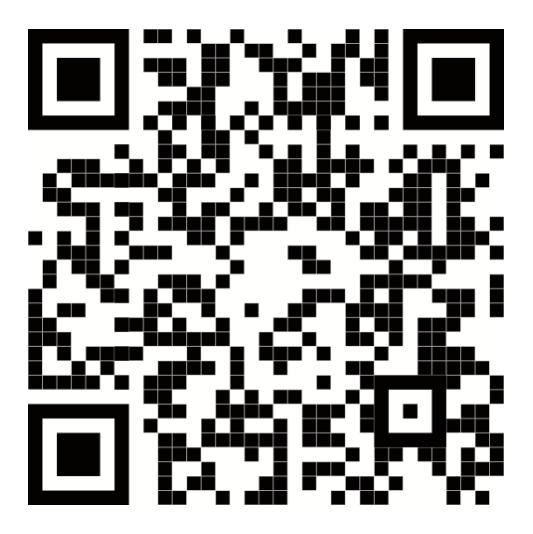

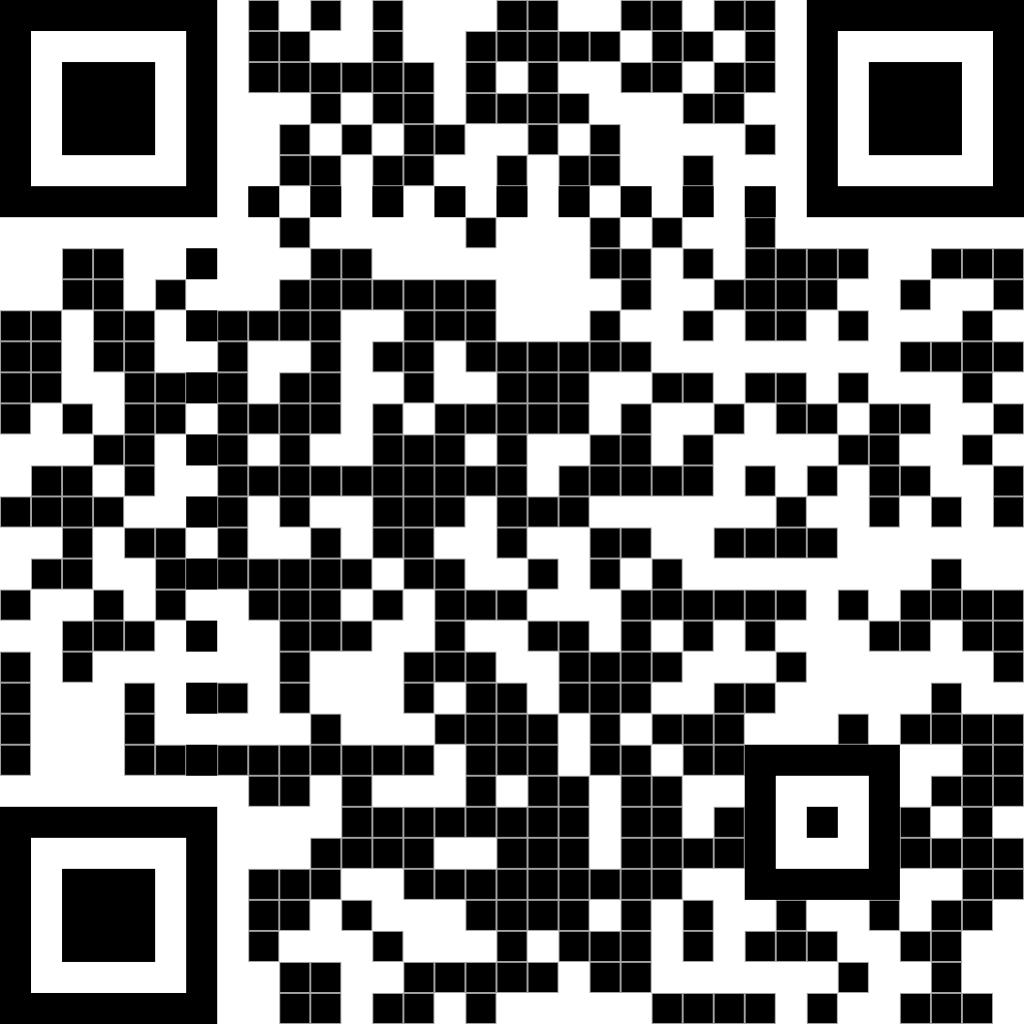
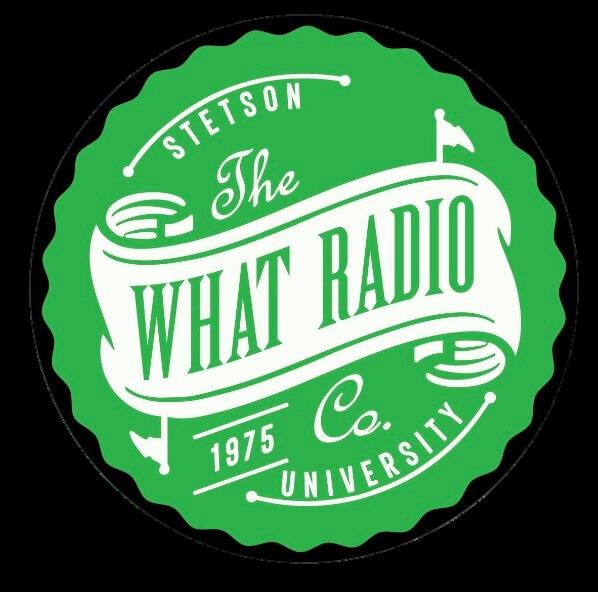




These questions are from Aiyana Wells, a new Hatter. If you have a question that you’d like answered by a staff member please send your question, name, and graduating class to hatternetwork@gmail.com with the subject line “Dear Reader”
As I’m sure you have heard a dozen times, college is one of the biggest transitions of your life and it is undoubtedly an intimidating one. Trust me, it is completely normal to feel a bit scared at the prospect of living and learning on your own for the first time, but sometimes it is a good reminder to focus on how exciting that fear can be. By going away to college, you earn this newfound sense of freedom unlike what a majority of high school was like. You design your schedule, choose your friends, interests, hobbies, and run your life in the way that you want. It is com pletely valid to fear being alone or making mistakes, but there is a sense of solidari- ty in the fact that everyone is or has gone through the same thing. College provides you the opportunity to reinvent, redefine, or simply grow from who you were, and the best advice I can give is just to allow yourself the grace to explore, try, and falter. Ultimately, you'll come out of this experience a better, more developed you. So, get involved and be present, whether it be at student events, games, clubs, concerts, or just loitering in front of the CUB. You’ll find your people, because good energy will attract that same energy back. Do and learn as much as you can, because best case scenario, you will find people and interests you never knew you loved.
Ciara Kelley ’24
“Will I do well at school on my own?”
Dear Reader,
It’s easy to imagine an endless workload before you begin college, but don’t worry yourself too much. Aside from exam weeks, coursework is relatively manageable. But as an incoming first-year student, you may have to adjust your study habits to achieve a good balance. In my experience, an integral part of this adjustment period was finding the right places to get things done. In other words, don’t make a habit of writing papers in your living space. Of course, your schedule may not always allow it, but try to keep your course work contained to specific places–like the library–so that when it is time to relax, you can tune out of school and into your social life. Don’t be dis couraged by popular images of sleep deprived college students; courses are designed to require a considerable amount of your free time, but you will still have time to get out there and experience the other activities school has to offer.



Dear Reader,
It’s good that you’re already thinking about what will define your college journey, because that means that you have the ability to start assembling a vision board of who you’d like to be by the end of this time in your life. Notice that I said vision board and not “map” or “game-plan,” because in my experience, life doesn’t care much about your plans. What will define your college journey are the broad goals of growth that you set up for yourself (think of Stetson’s core value of Personal Development). If you want to be a kinder, more purposeful, and more confident person, then I believe that you will be. If you set too specific a goal, like becoming a trial attorney, then I can’t promise that you’ll even still want that goal by the time your senior year rolls around — I sure didn’t!

“What will define my college journey?”
“How can I maintain a healthy work-life balance?”
Do you have an appreciation for the creative arts or just want to learn a new skill?
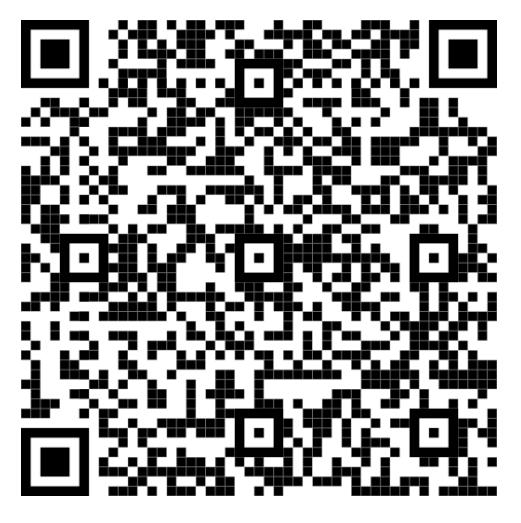
Our magazine encompasses all things poetry, prose, photography, and visual arts.

Thinking about joining Touchstone? We’d love to have you!

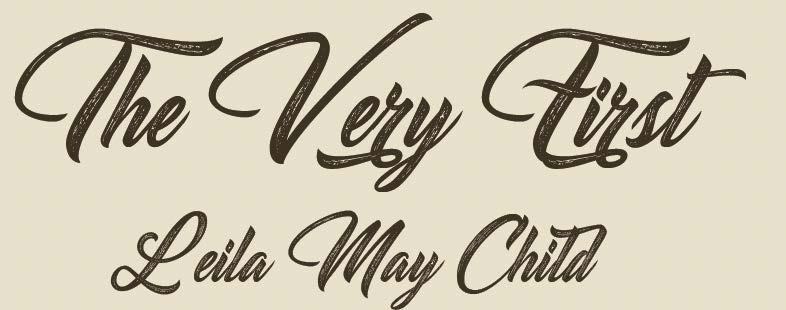

Each day you walk across campus, it becomes easier and easier to imagine yourself walking across the stage at graduation, donned in either cap or cowboy hat. Since Stetson’s founding in 1883, thousands of students just like you studied hard and graduated with a college degree. But you may find yourself wondering, who was the first? Leila May Child, one fascinating and thoughtful young woman, made history by becoming the very first Stetson collegiate graduate in 1893. Stetson has undergone many changes since Leila May attended, but current students can still find value in her story.
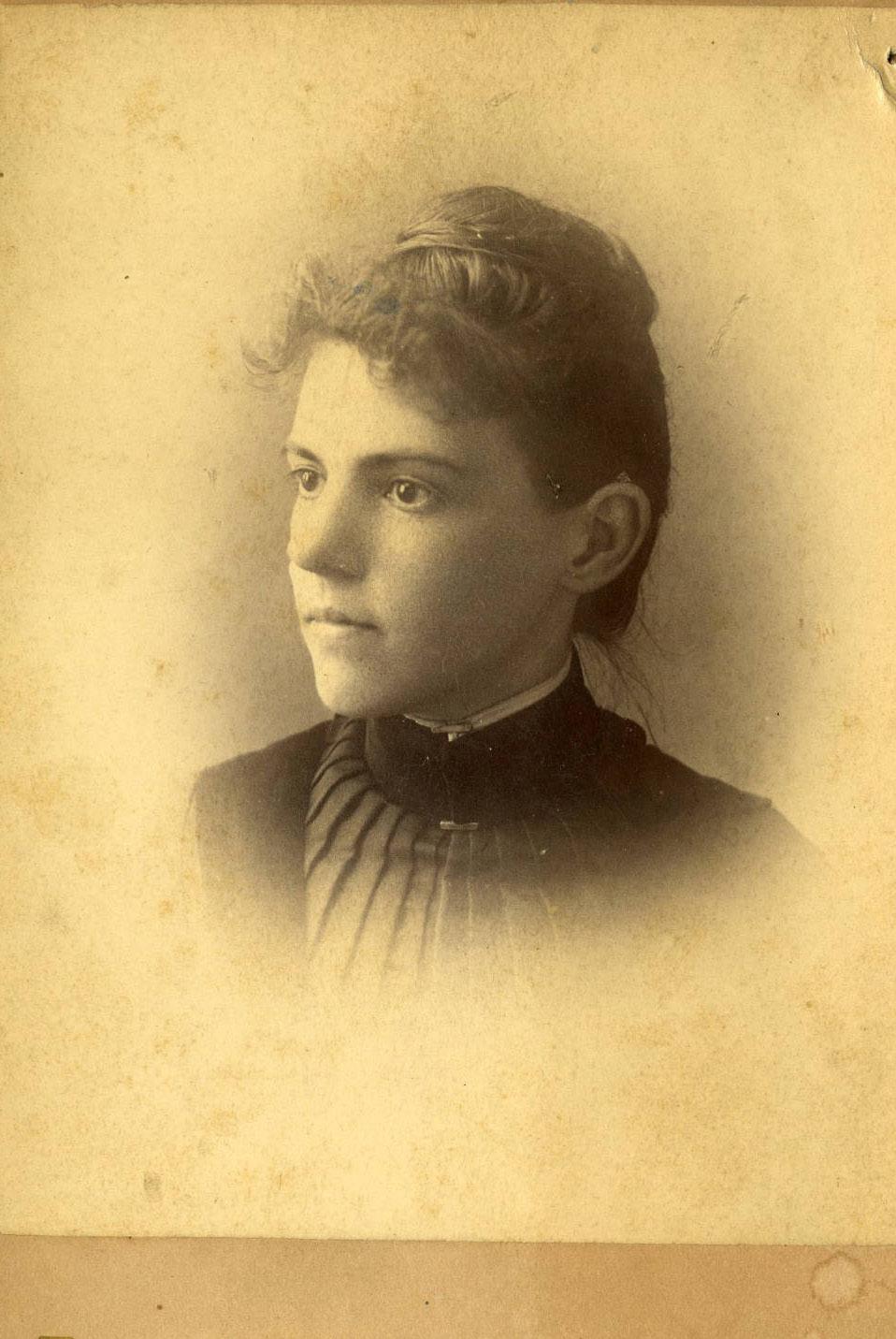
1893 was an eventful year for the United States as a whole. Grover Cleveland was beginning his first year of presidency, the fanciful Gilded Age was winding down and Progressive Era activists were beginning to sweep the nation with social and political reforms. The year also saw the Chicago World’s Fair, which introduced innovations like the electric dishwasher, cream of wheat, fluorescent light bulbs and the first official Ferris wheel. Despite its marvels, however, 1893 is most remembered for its devastating stock market crash, which resulted in a four-year-long economic depression.
As if that was not enough excitement to manage, Leila May was wrapping up her last year at John B. Stetson University. And no, that title isn’t a mistake; the university had not yet shortened its name in 1893. Still in its early years of development, the campus Leila May roamed was much different than the one we see in 2023. She got to climb the steps of a brand new, breathtaking Elizabeth Hall, but the iconic Holler fountain and many of the school buildings had not been imagined yet. Aside from the scenery, her academic experience would have been much different than the one Stetson offers today. Because of the university’s official association with Baptist Church, extracurriculars and degree requirements were often aligned with Baptist messaging. Leila May would have started her mornings by attending chapel service, in which students were penalized if not in attendance. Her degree requirements would have been similar to those today, but attending Bible Study courses was mandatory to receive her diploma. Months after Leila May’s graduation in 1893, the Department of Bible Study was replaced with the Department of Biblical Literature.
Along with these requirements, the university prided itself on offering a substantial education for young Christian men
and women. John F. Forbes, the first president of the university, wrote of the college in 1890, “The central and controlling idea, involved in its foundation is to give in Florida. . . a Christian education as broad, as liberal, and as thorough as can be obtained in any part of our country. . .” meaning Leila May would also be required to complete science, higher English, and commercial business courses to earn her degree. Though the physical and educational landscapes of John B. Stetson University underwent quite a lot of change in the past 130 years, Leila May’s experiences at the university were not entirely unfamiliar to what students experience in 2023.

Flash forward to Betty Carol and David Mann, descendants of Leila May. They have graciously provided Stetson with many of the physical relics we now have of her time here, most notably, her actual 1893 diploma. When Betty recalled the first time learning about her grandmother’s connection to Stetson, she said “I looked up Stetson online, like, okay, I just called the registrar you guys exist?” Once getting in contact with Stetson University, though, both sides were thrilled to have more information. David and Betty even personally traveled to Stetson to gift Leila May’s physical diploma to the university, where it still currently resides in the Stetson archives.
Once learning more about Stetson and Leila May’s connection to the university, David and Betty, with the help of Stetson archivists and historical experts, expanded their limited knowledge of their grandmother. Some of this information outlined what Leila May spent her time at Stetson doing. “She taught in the local elementary academy that was associated with the Stetson Academy” said David with admiration.
One of the more faded histories is the love story of Leila May and James Mann, who attended Stetson at overlapping times and eventually went on to be married.“Yeah. We don’t know. We don’t know when they got romantic because it really developed after graduation for her,” comments Mann as he reflects on some of the missing puzzle pieces in his grandmother’s Stetson story. While we don’t know whether Leila May and James Mann were romantically involved during their undergraduate studies, we do know that these early Hatters went on to become Stetson Sweethearts.
After receiving her diploma, Leila May Child packed up and “moved away from DeLand,” and in 1900, “got married en route to this new new life in Arizona,” recalls David. This was the Leila May that Betty and David grew up knowing and hearing stories about. Even though they didn’t know Leila May in her college years, Betty
fondly remembers James, Leila May and the time that they “lived on a kind of a dirt Ranch outside of Tucson to raise the three boys.” It seems that Leila May’s later life was characterized by her devotion to her children, and later on, her grandchildren. However, Betty and David agreed that elements of her educational background shone through in the way that she raised her children and lived her life.
At her graduation in 1893, Leila May Child delivered a commencement speech using her essay, “Philosophy in Common Life.” On the topic of change, she says:
Over 100 years later, these words still resonate with Stetson students today. When Leila May started her education at John B. Stetson University, she probably could not imagine the person she would be while delivering the commencement speech. All she could see was a span of time, but she understood that change would not happen on its own. As you navigate Stetson University and imagine your own triumphant walk across the graduation stage, remember Leila May’s words of wisdom and think about the changes you want to make before receiving your degree.

“Time is only the mind’s interpretation of change. The length of time between events is the amount of change realities have undergone. Change is not in time,



The writers and editors of the Reporter have a tradition of including a playlist along with each magazine issue. The songs on the playlist reflect both the theme of the issue and the mood of the team while creating this issue. This page includes a selection of the songs on the playlist; head over to Spotify to listen to the full playlist.
Perfect Day - Hoku
Kids In America - Kim Wilde
Breakthrough Feeling - Strawberry Generation
Good Life - Sammy Rae & The Friends
*Shotgun - Pomplamoose, dodie
“For anyone coming from out of state, this song reminds me of Florida and new beginnings” - Carlye Mahler
Doubt - Mary J. Blige
Mosquito - Red Velvet
*Silver Spoon - BTS
“As a song about the pressure to succeed that is placed upon younger generations; it resonates strongly with me when I am in academic weapon mode” - Hayle Morgan
Electric Love - BORNS

*Safe And Sound - Capital Cities
“This is just one of those songs that allow me to tune out the world around me and focus on myself for just a minute” - Alis Cadena
Wherever I Go - OneRepublic
*Shake It Off - Taylor Swift
“This song helps me get back into the groove for the upcoming semester” - Reagan Shivers
Dance The Night - Dua Lipa
*End of Beginning - Djo
“It was my most listened to song of 2022 and I feel like it really encapsulates the feelings that surround transition” - Ciara Kelley
Curated by Carlye Mahler and Alis Cadena Graphics and Layout by Hayden Collins

